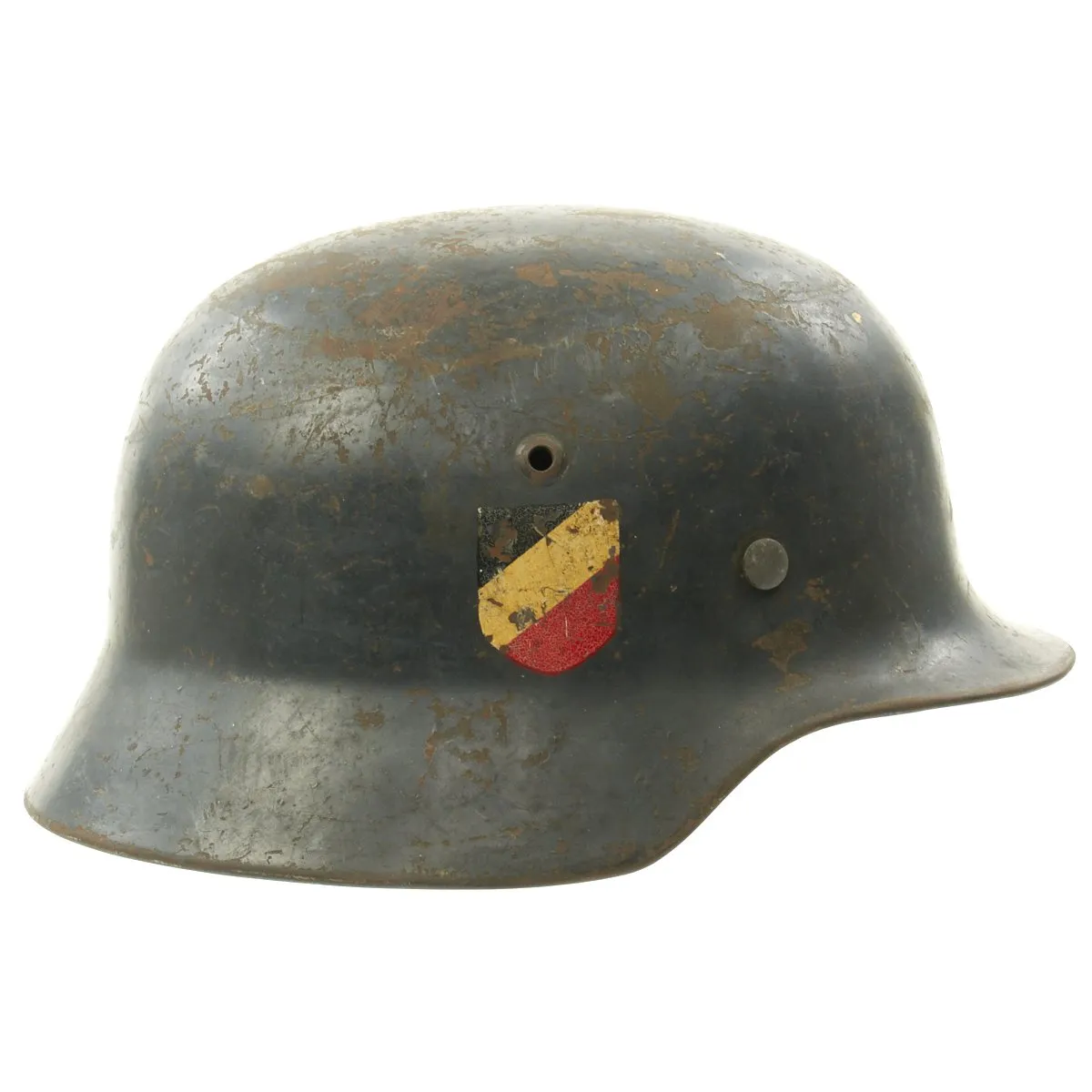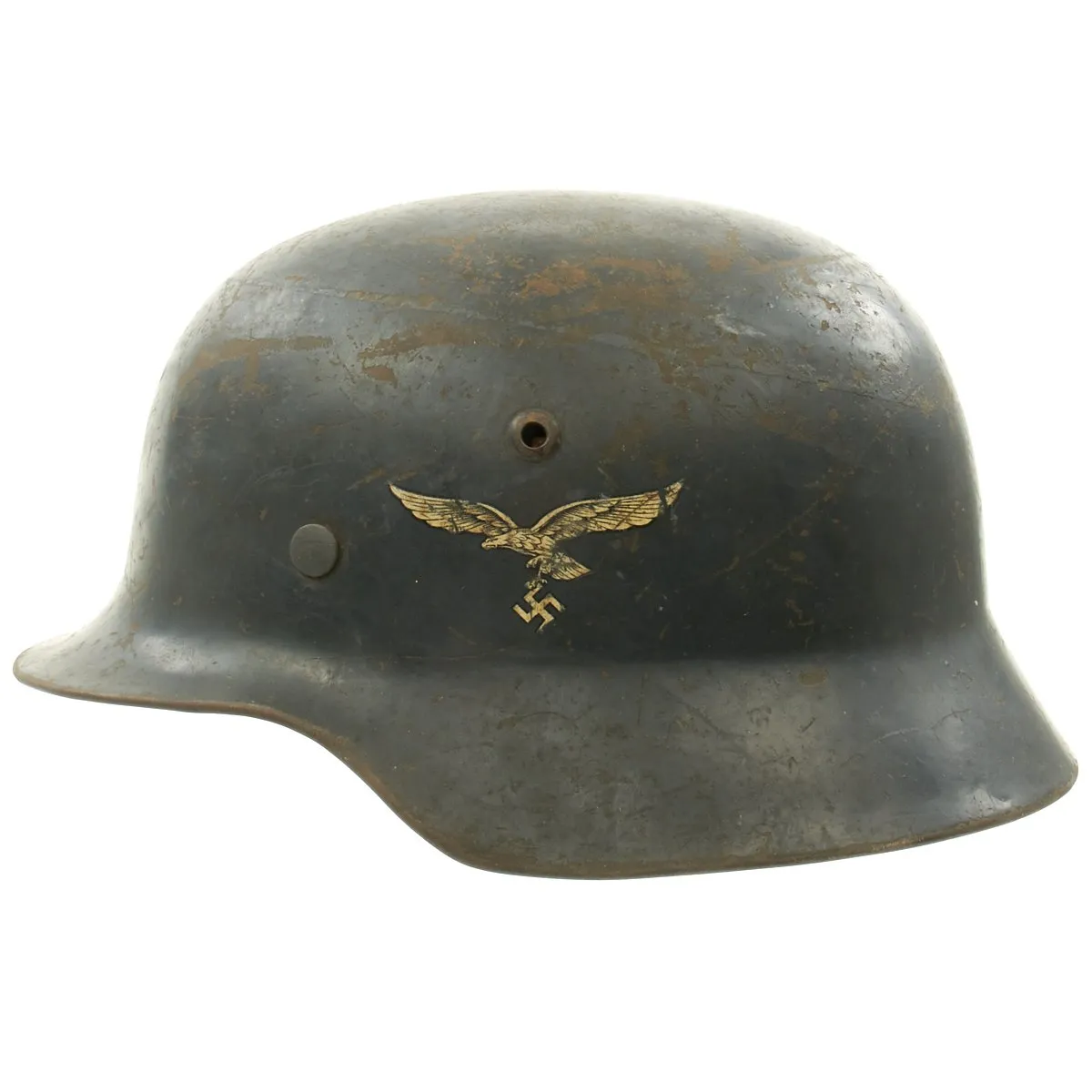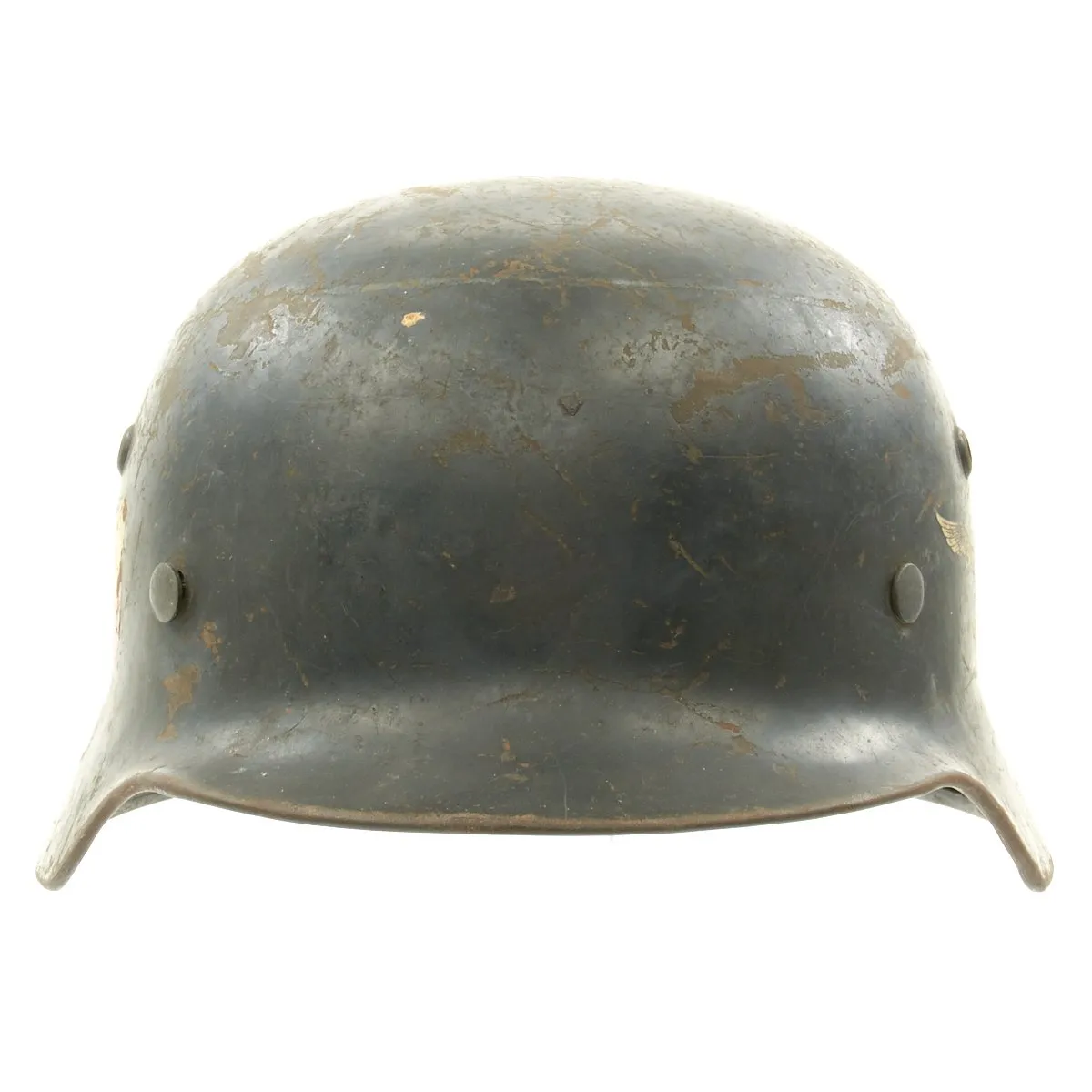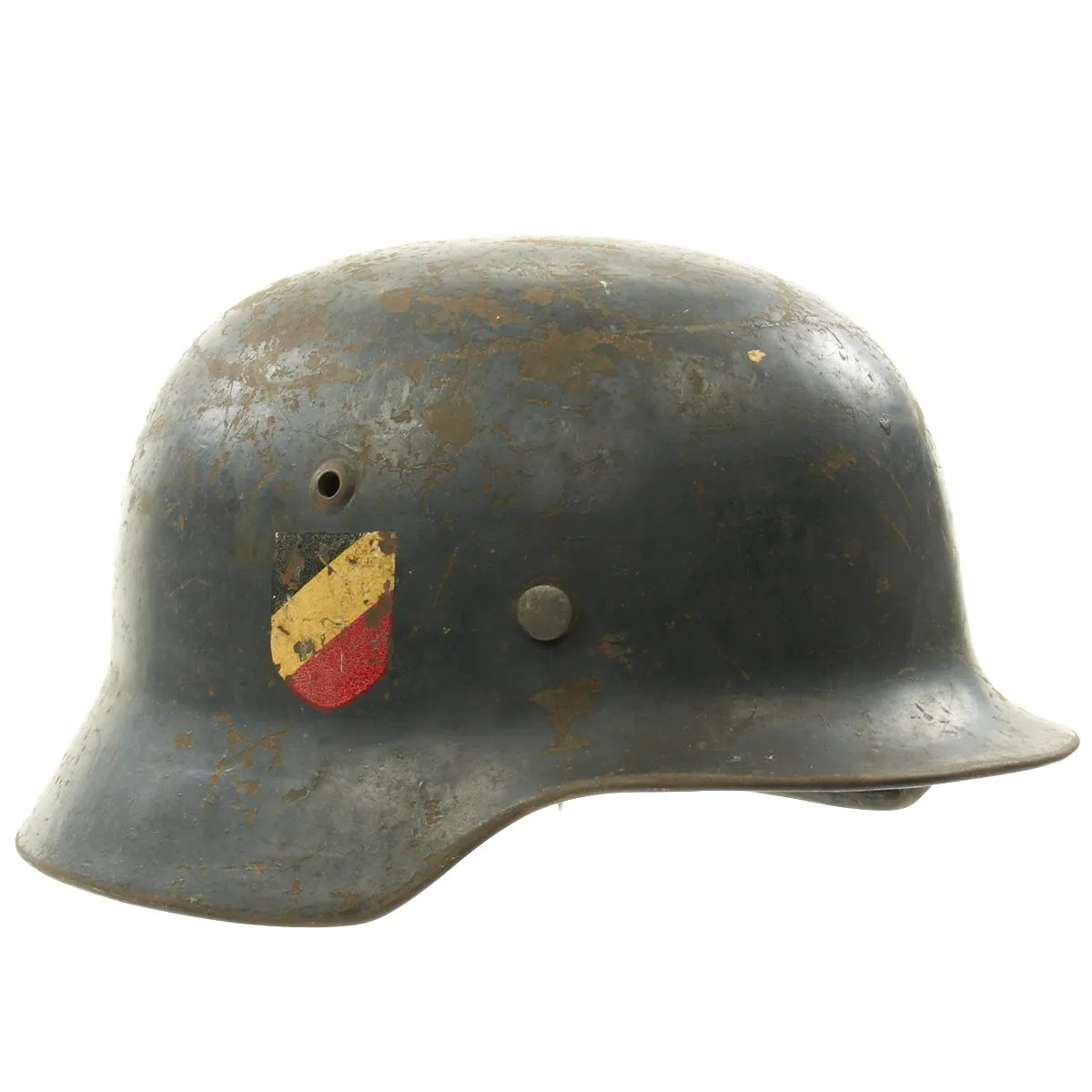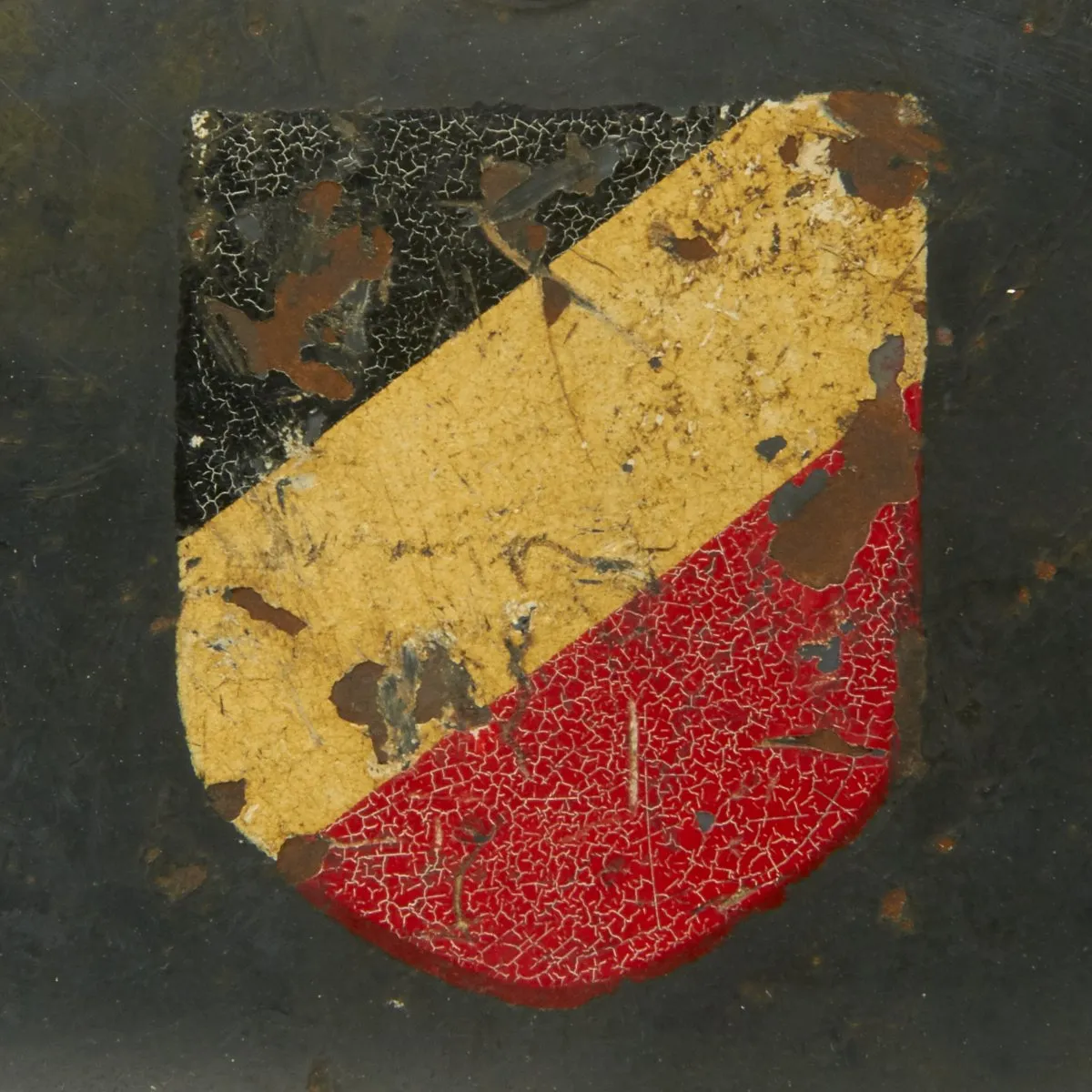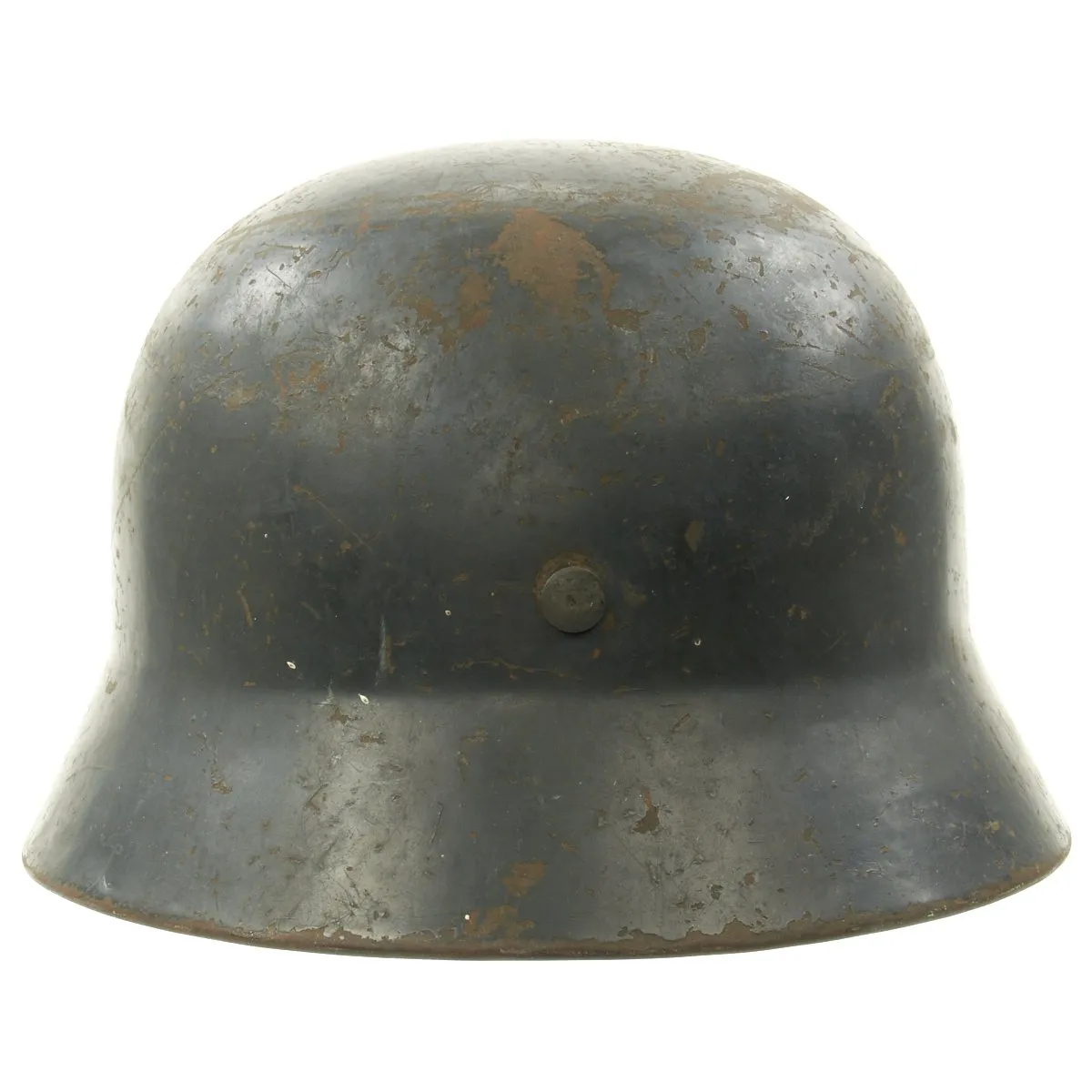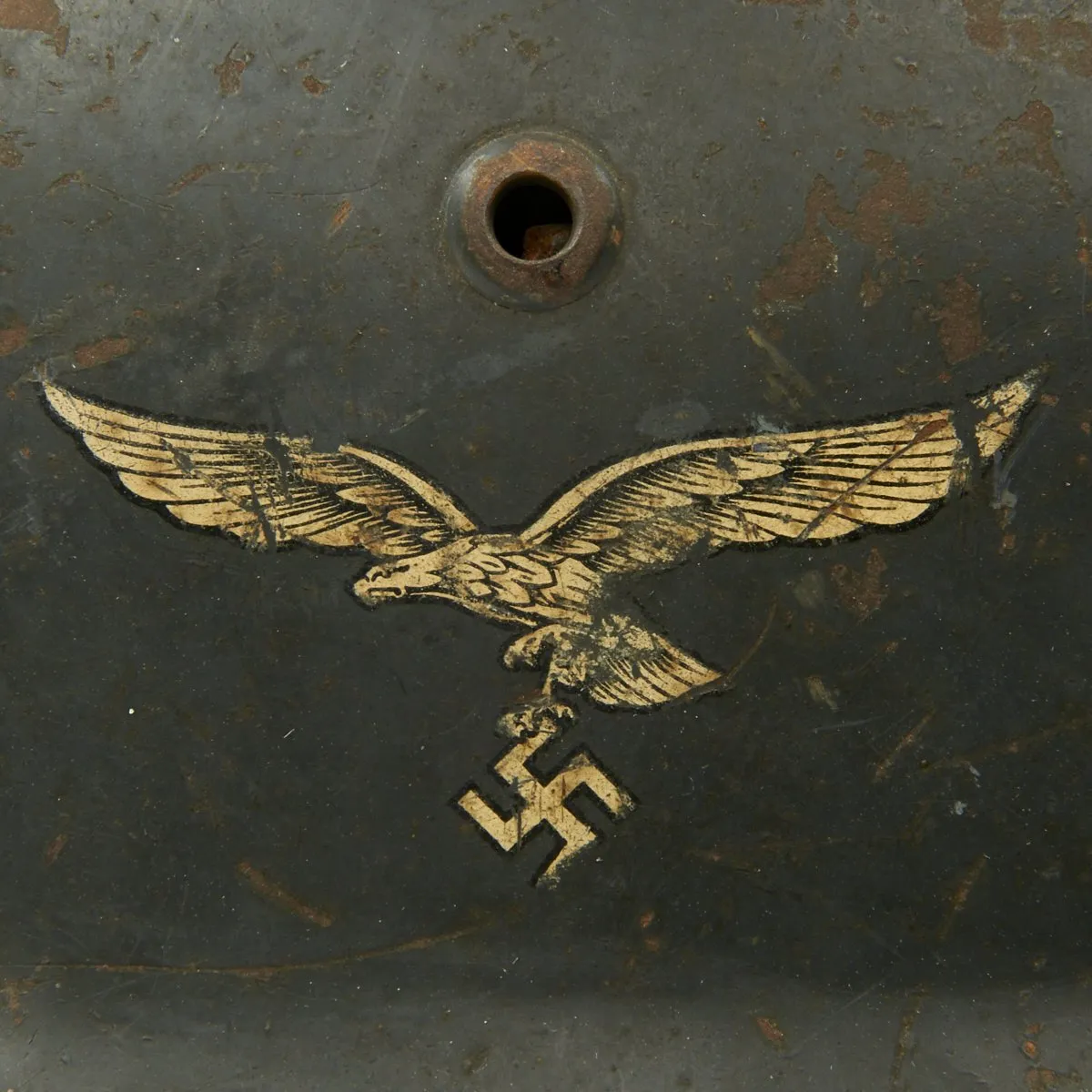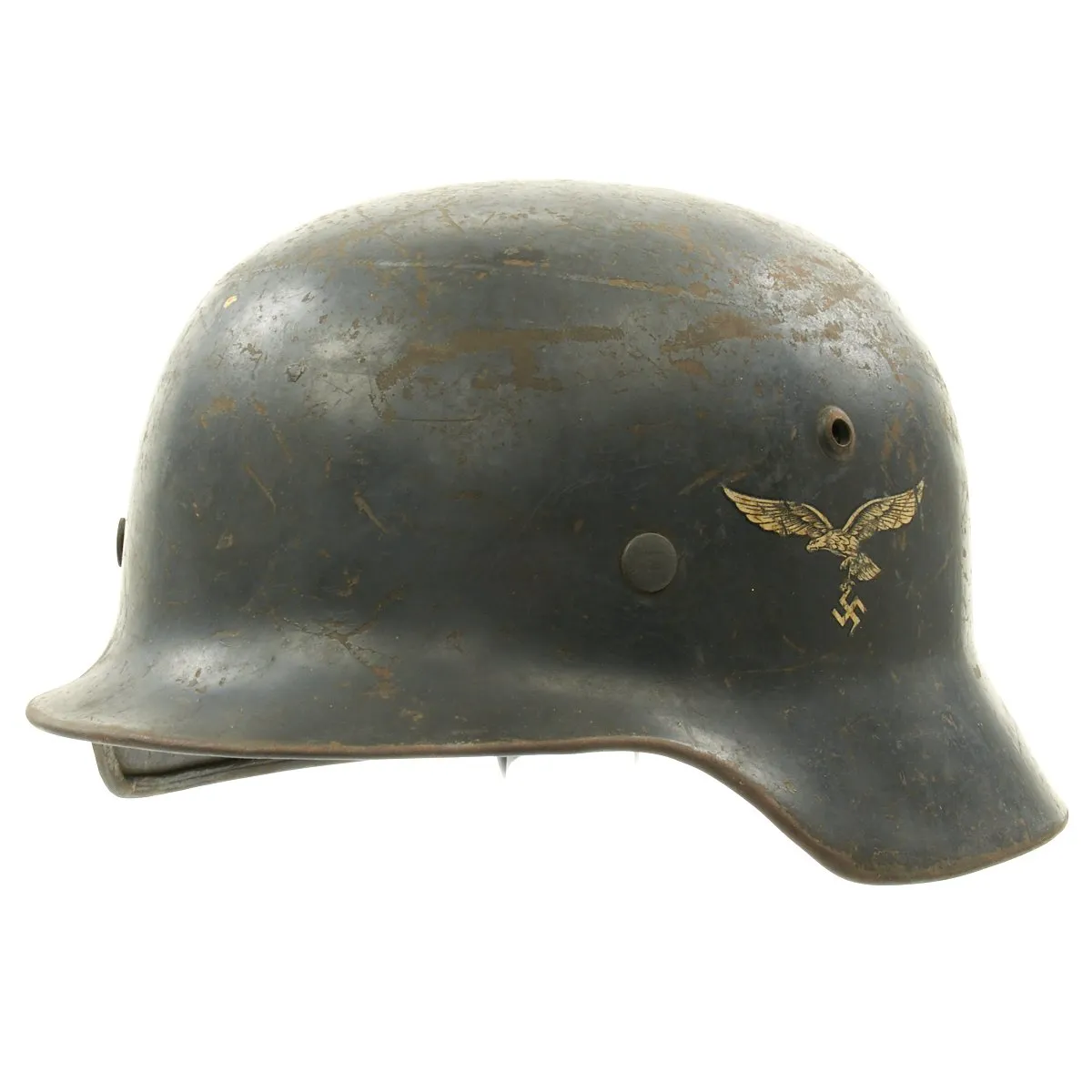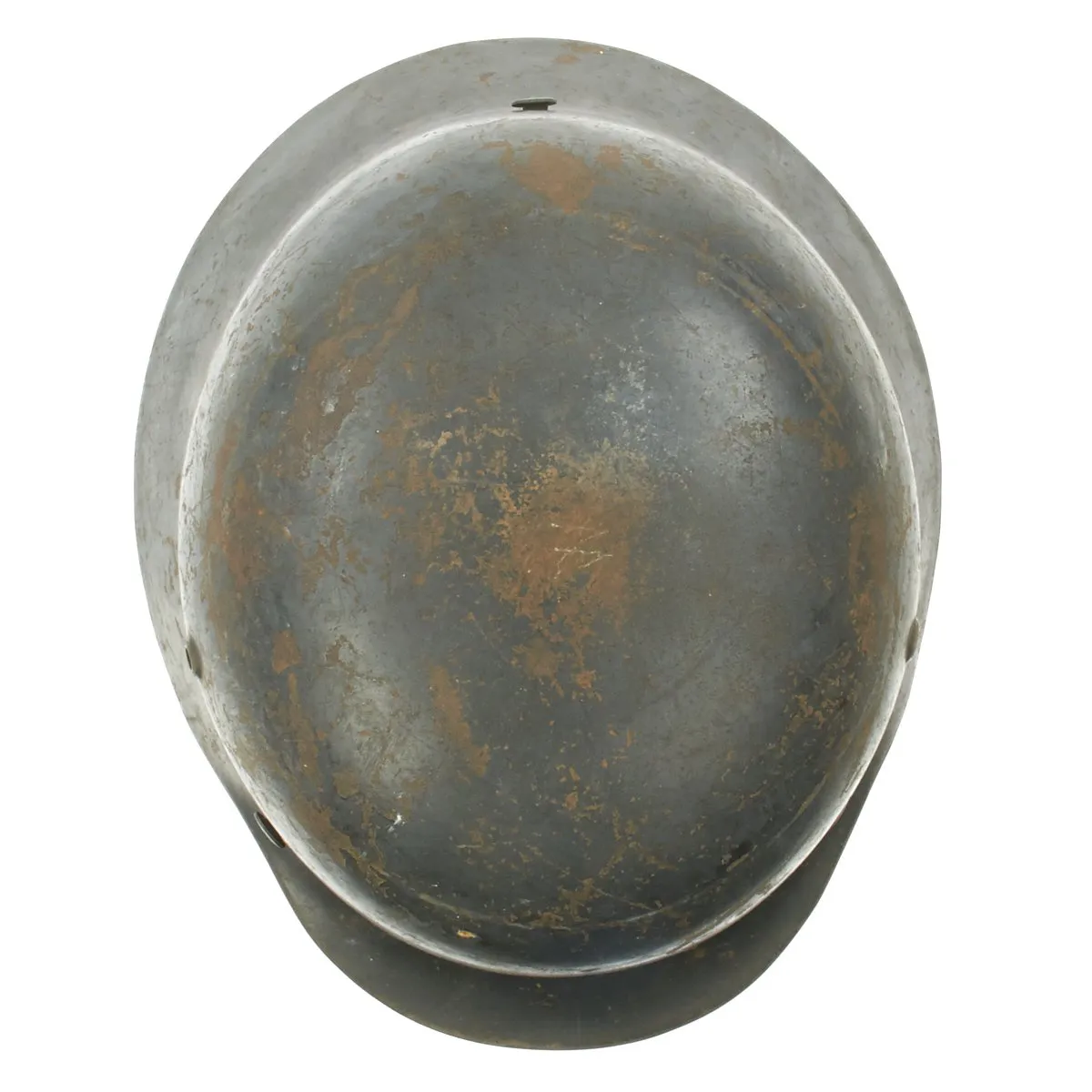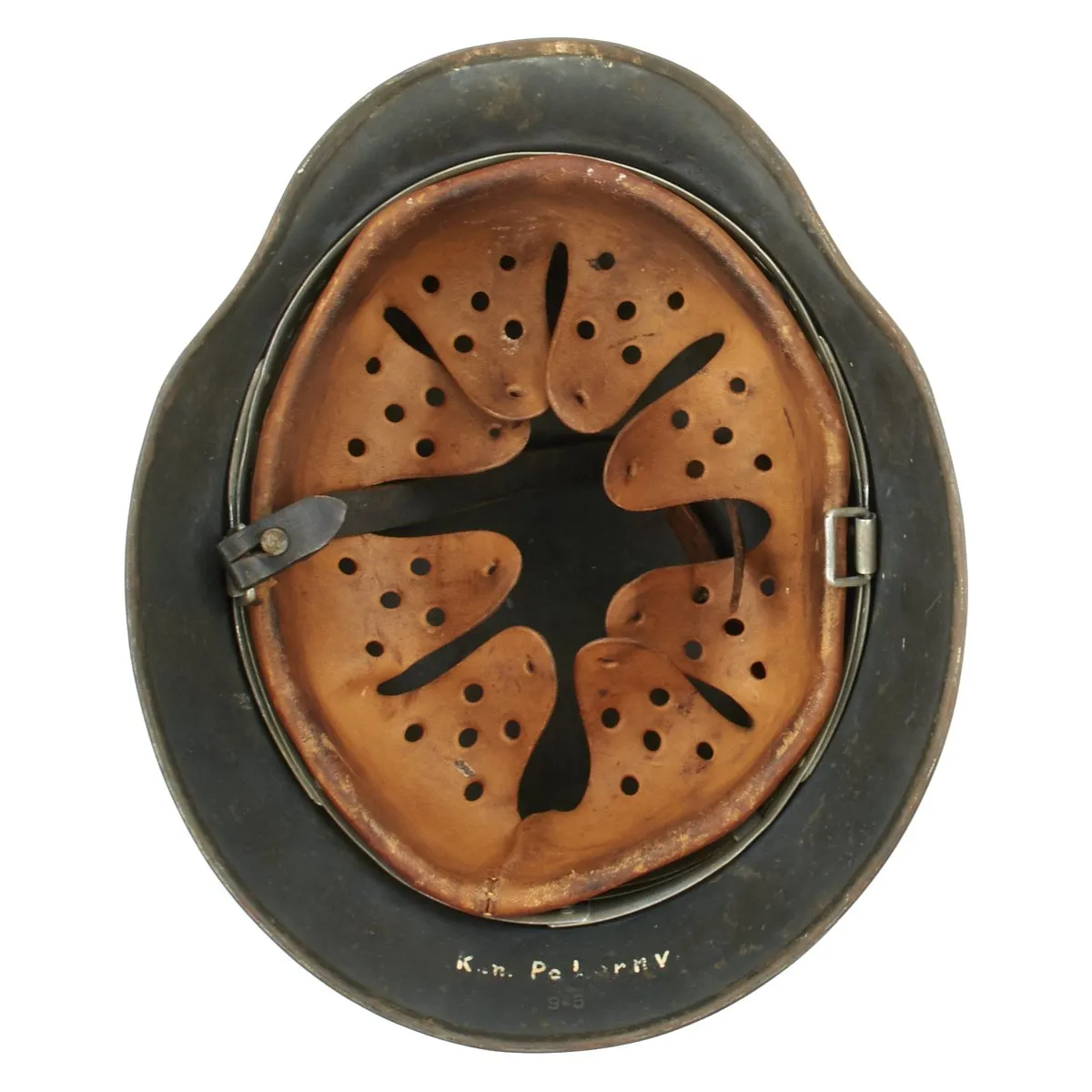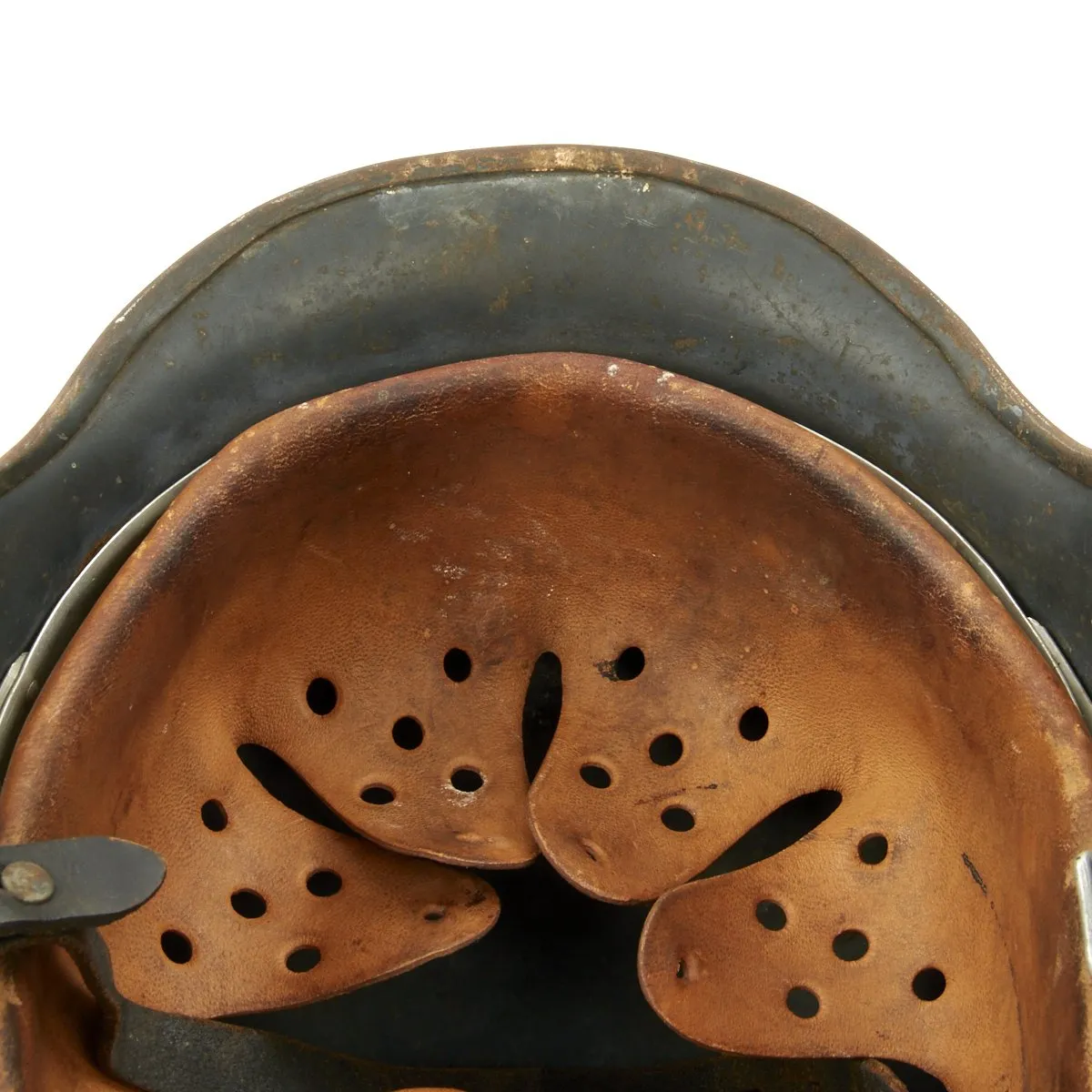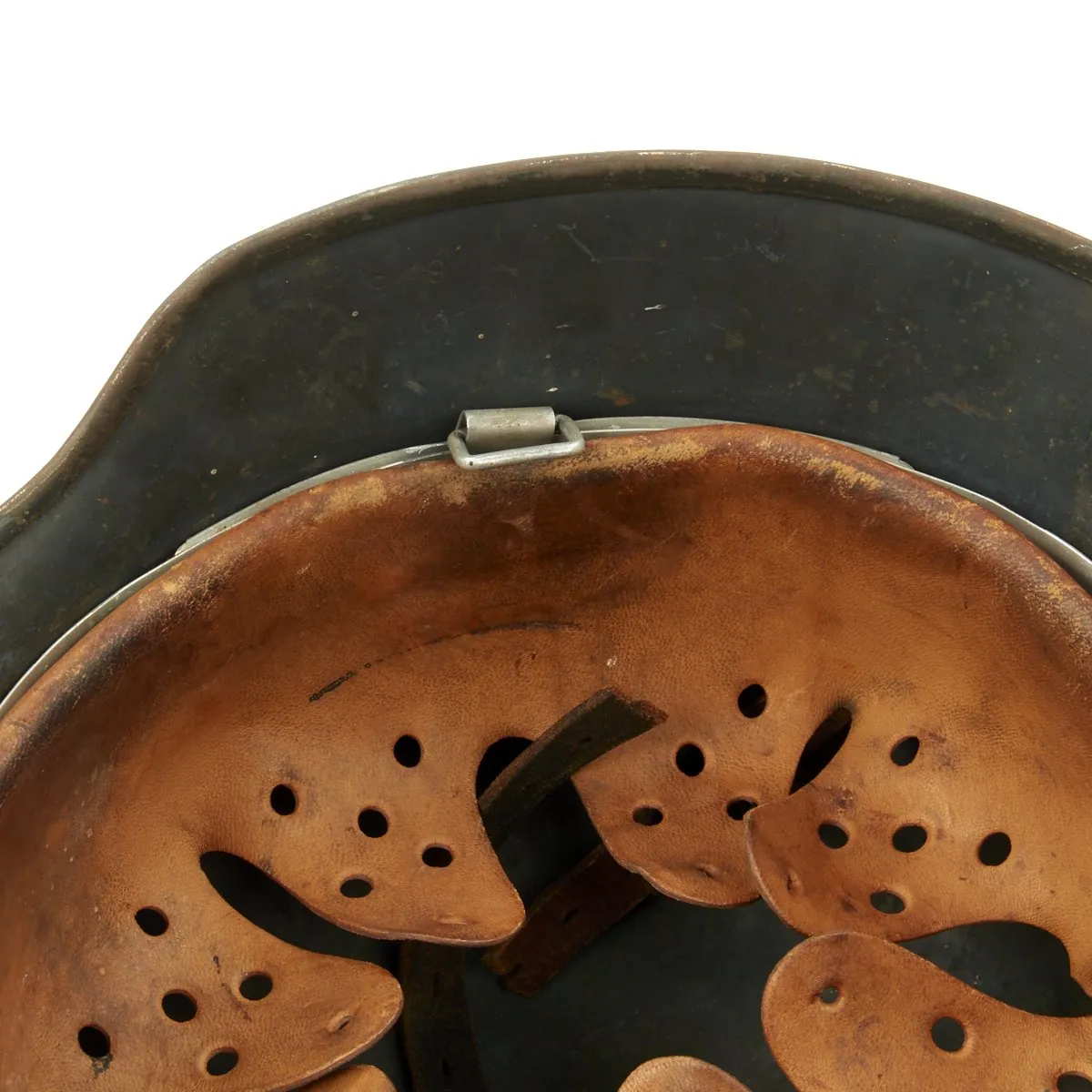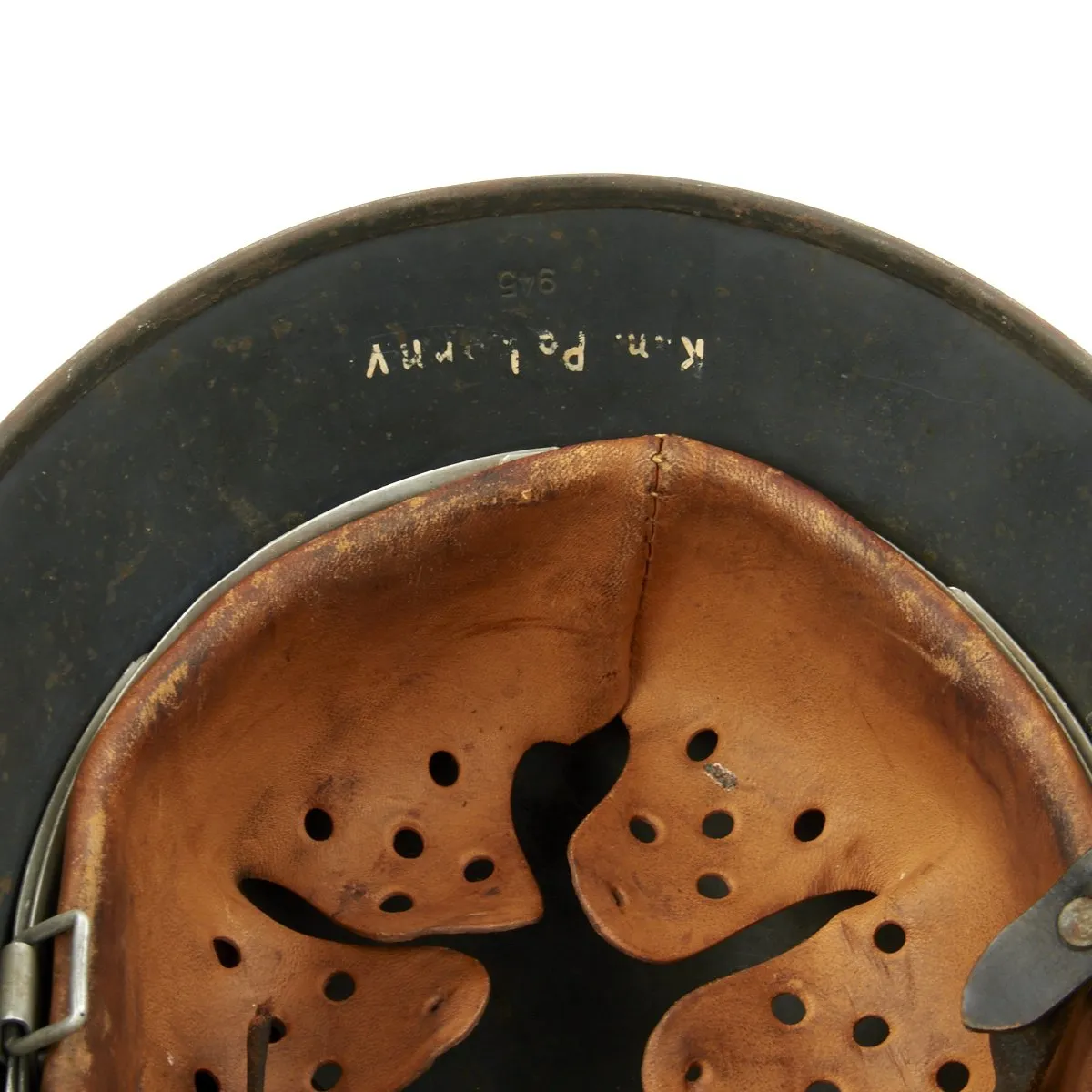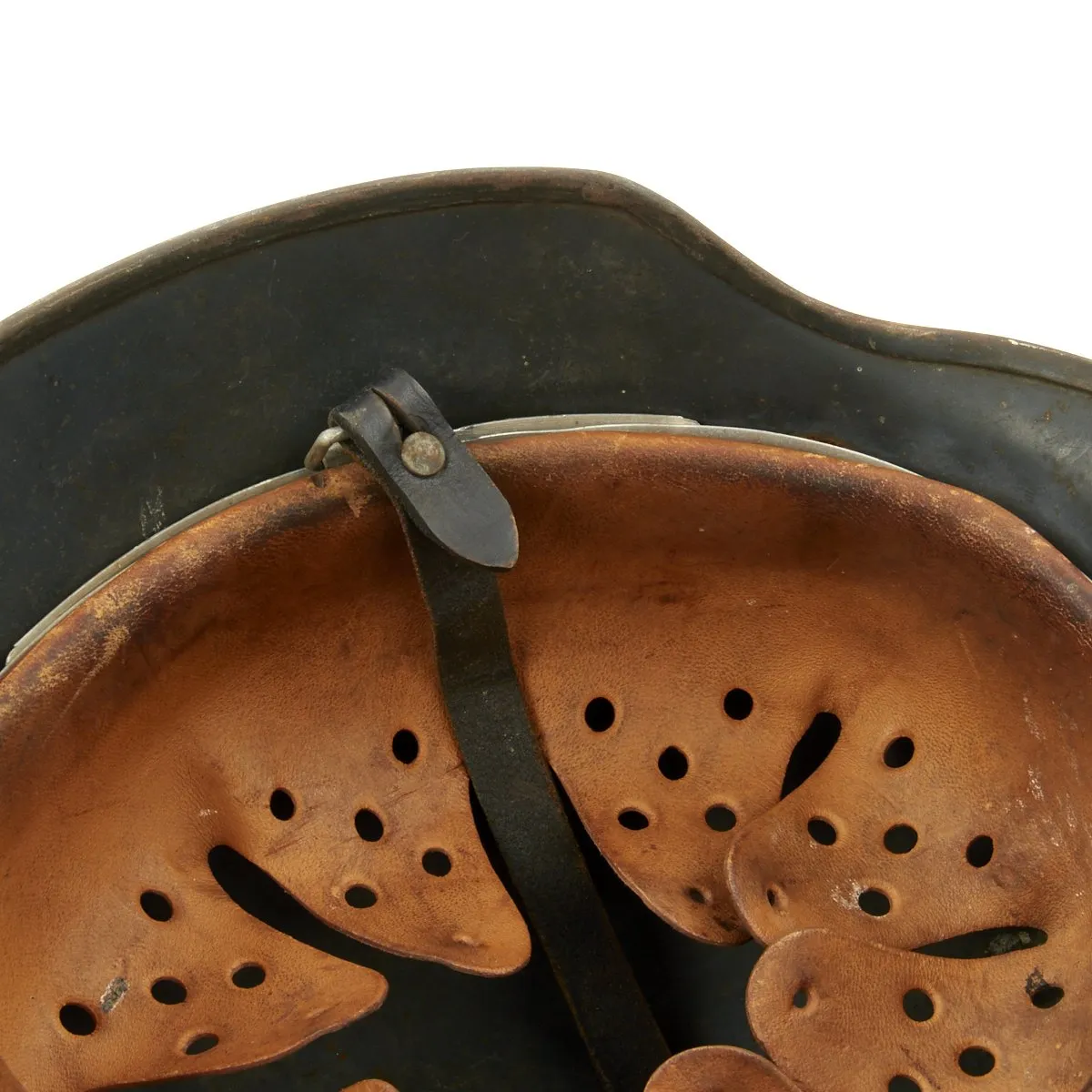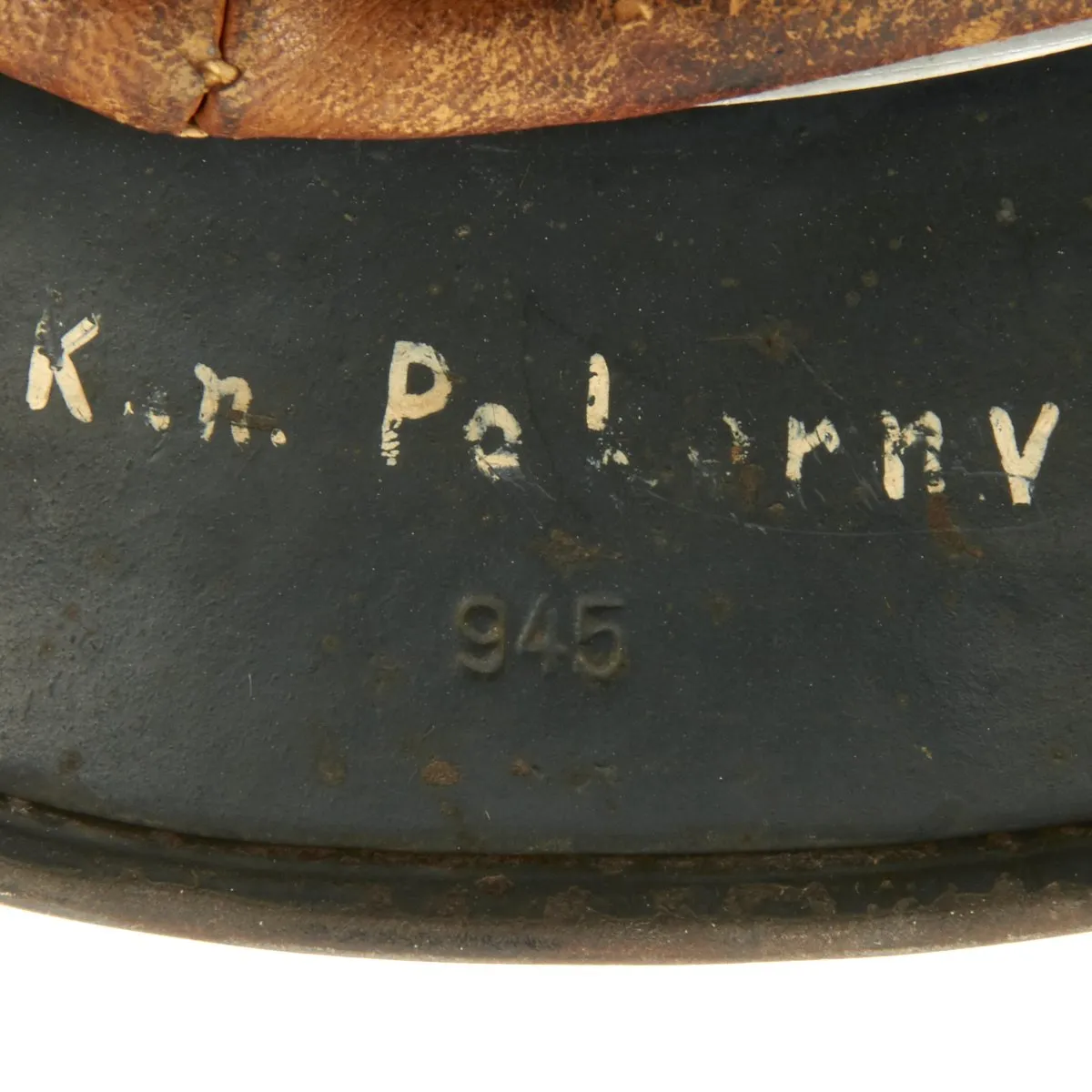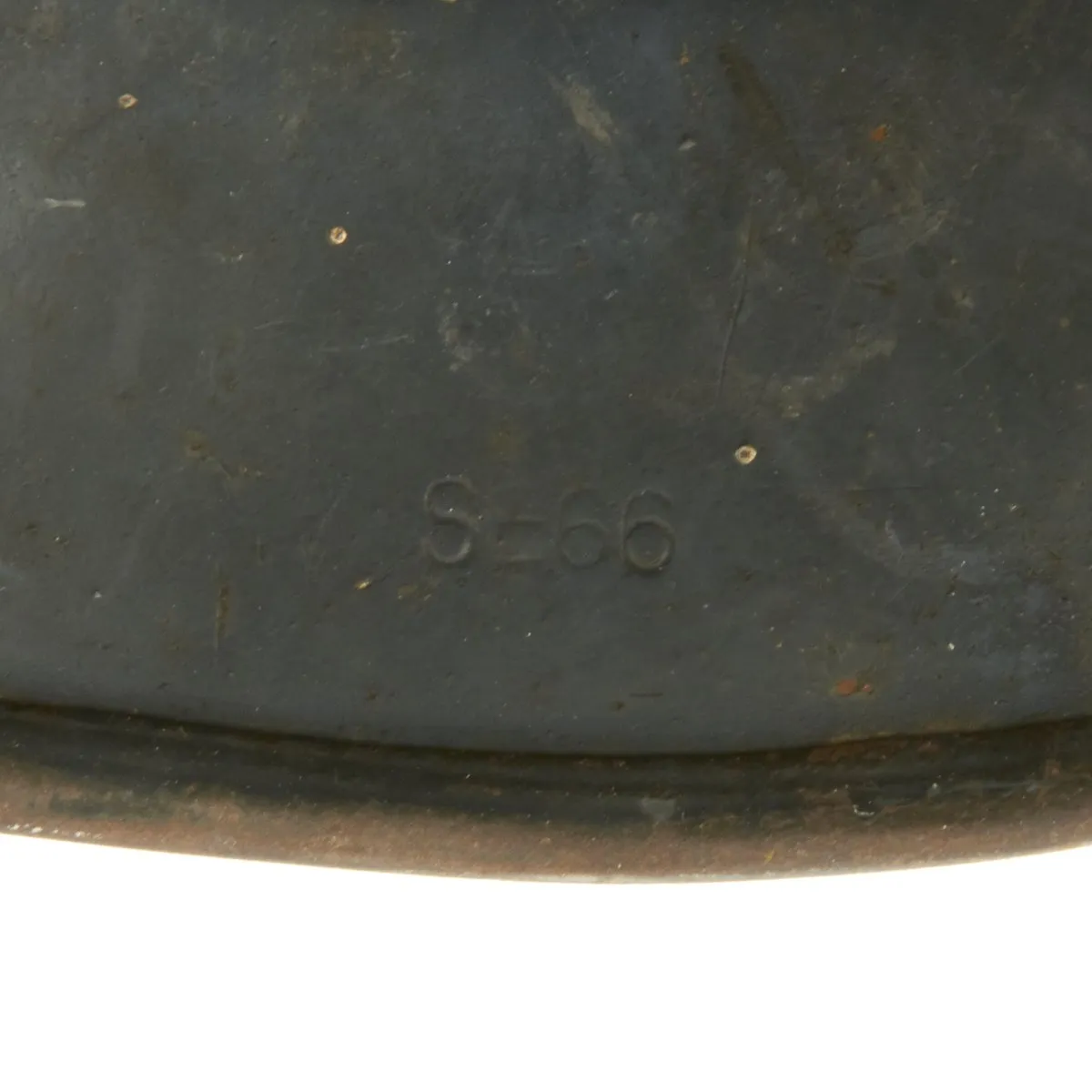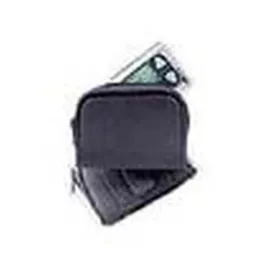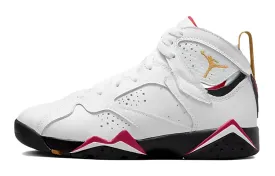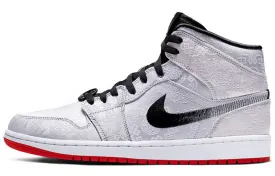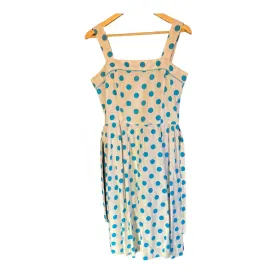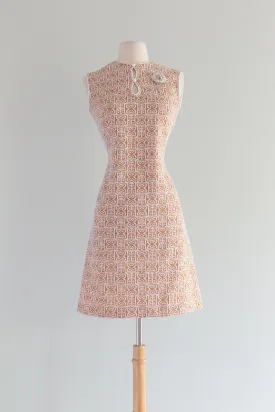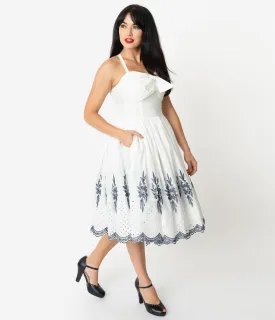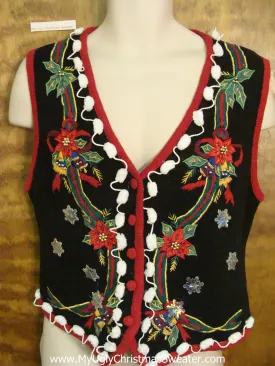Original Item: Only One Available. This is a nice all original example Model 1935 German WW2 "double decal" helmet with an early "Droop-Tail" Luftwaffe Eagle decal on the left side, and a "National Colors" decal on the right. This stamped sheet steel construction helmet retains around 70% of the original Luftwaffe gray-blue paint and is in good condition overall, with no major dents or other damage.
The Luftwaffe decal is probably around 90%, one of the better droop-tails that we have seen. The National Colors decal fared a bit worse, with probably 80% remaining, mainly from some areas having been scratched off with the underlying paint. All three liner retaining pins are intact, with almost all of their original Lufwaffe blue paint.
The reverse, interior, neck guard apron is batch number stamped, 945 and the interior, left side, apron has a stamped manufacturer's code and size, SE66 indicating that indicating it was manufactured by Sächsische Emaillier und Stanzwerke A.G., Germany in size 66. Size 66 is a nice large size that can accommodate liners from 58cm to 59cm or US 7 1/4 to 7 3/8. Size 66 shells are harder to find and are therefore more valuable to a collector.
This helmet is also named on the inside of the rear skirt, with Kan. Pokorny in white paint. The marking is a bit worn, so we cannot be sure that our transcription is accurate.
The helmet still has its correct good condition M31 liner, with all 8 fingers intact and flexible. The leather is a bit stiff due to age, but does not show major wear, and one finger is ink stamped 59. The liner band is aluminum, correct for a helmet of this vintage, and is marked 66 n.A. / 59, indicating that it is a size 59 for a size 66 shell. The chinstrap is mostly missing, with the buckle side completely gone, and the longer side missing about 2-3 inches.
Overall a very nice totally correct 100% genuine very early double decal Luftwaffe helmet, ready to display!
The first "modern" steel helmets were introduced by the French army in early 1915 and were shortly followed by the British army later that year. With plans on the drawing board, experimental helmets in the field, ("Gaede" helmet), and some captured French and British helmets the German army began tests for their own steel helmet at the Kummersdorf Proving Grounds in November, and in the field in December 1915. An acceptable pattern was developed and approved and production began at Eisen-und Hüttenwerke, AG Thale/Harz, (Iron and Foundry Works), in the spring of 1916.
These first modern M16 helmets evolved into the M18 helmets by the end of WWI. The M16 and M18 helmets remained in usage through-out the Weimar Reichswehr, (National Defence Force, Circa 1919-1933), era and on into the early years of the Third Reich until the development of the smaller, lighter M35 style helmet in June 1935.
The Luftwaffe pattern national eagle was originally introduced for wear by Fliegerschaft, (Pilot Base), personnel of the DLV, Deutscher Luftsportsverband, (German Air Sports Association), the clandestine, civilian, forerunner of the Luftwaffe on August 18TH 1934, and adopted for wear by the Luftwaffe on March 1ST 1935 along with the national tri-color shield for wear on the helmet.
The first pattern national eagle was utilized until a modified second pattern eagle was introduced in late 1936 or early 1937. Regulations of June 12TH 1940 discontinued the use of the national tri-color decal and further regulations of August 28TH 1943 abolished the national eagle decal and dictated that it was also to be removed from all helmets although the directives were not completely adhered to.




